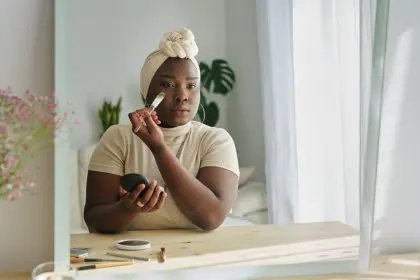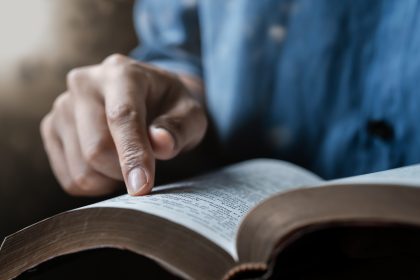Breakups rarely follow scripts. Some former exes transform into trusted friends, maintaining warmth without romance. Others vanish completely, erasing years of shared history in an instant. These dramatically different responses to relationship endings reveal profound truths about how people process loss, establish boundaries and pursue healing.
Emotional maturity determines the aftermath
How people navigate breakups mirrors their overall emotional development. Those with strong self-awareness and healthy communication patterns often maintain respectful connections after romance ends. They recognize that relationships can evolve rather than simply die.
Emotionally mature individuals typically:
- Separate romantic feelings from genuine care
- Communicate boundaries clearly and kindly
- Process grief without needing complete erasure
- Value shared history without clinging to it
Conversely, those carrying unresolved wounds or lacking conflict resolution skills often choose immediate, total separation. For them, any contact feels like salt in open wounds. This response reflects self-protection more than spite – they’re avoiding pain they don’t yet know how to process.
Staying close serves different purposes
Some exes maintain contact because their connection transcends romance. When breakups happen mutually or amicably, the underlying friendship often survives the romantic dissolution. These former partners continue sharing life updates, inside jokes and emotional support.
This closeness can provide:
- Emotional continuity during transition
- Validation that the relationship mattered
- Support from someone who truly knows you
- Proof that love can transform rather than disappear
However, proximity without clarity creates problems. When one person harbors reconciliation hopes or hasn’t genuinely moved on, friendship becomes torture disguised as connection. True post-breakup friendship requires both people to release romantic expectations completely.
Distance creates necessary healing space
Many people instinctively know that healing requires separation. Watching an ex move forward – dating others, achieving goals, simply existing without you – can derail personal recovery. Strategic distance protects emotional progress.
Cutting contact serves multiple functions:
- Prevents reopening emotional wounds
- Allows independent identity rebuilding
- Eliminates mixed signals and false hope
- Creates space for new connections
In relationships marked by toxicity, betrayal or abuse, severing ties becomes essential self-preservation. This isn’t bitterness – it’s wisdom. Some connections damage more than they nurture, and recognizing this takes strength.
Attachment styles predict breakup behavior
Psychological attachment patterns established in childhood often dictate post-breakup choices. These ingrained styles influence whether people seek closeness or create distance after relationships end.
Secure attachment enables healthy post-breakup friendships. These individuals manage emotional shifts without feeling threatened, maintaining connections while respecting new boundaries.
Avoidant attachment drives people to create immediate distance. They cope by compartmentalizing, often appearing to move on quickly while processing privately.
Anxious attachment creates complicated dynamics. These individuals might cling desperately or cut contact completely, struggling to find middle ground between fusion and abandonment.
Understanding your attachment style illuminates post-breakup patterns, helping break cycles that no longer serve you.
Shared responsibilities complicate clean breaks
Reality often prevents complete separation. Children, businesses, mortgages and social circles create mandatory ongoing contact. These situations demand emotional sophistication and clear boundaries.
Forced proximity requires:
- Redefining relationships from romantic to functional
- Establishing communication protocols
- Separating practical matters from emotional ones
- Protecting new relationships from old dynamics
Success depends on both parties committing to new relationship terms. Without mutual agreement, these necessary connections become battlegrounds rather than peaceful coexistence.
Social pressures influence choices
Cultural backgrounds and social environments significantly impact post-breakup behavior. Communities valuing harmony might pressure former couples to maintain friendly appearances. Others expect complete separation as proof of moving forward.
Social media intensifies these pressures by making private choices public:
- Unfollowing feels like public rejection
- Continued interaction invites speculation
- Digital presence prevents true separation
- Comparison becomes unavoidable
Many people cut digital ties specifically to escape these complications, choosing mental health over social expectations.
Recognizing healthy versus harmful connections
Determining whether to maintain contact requires honest self-assessment. Healthy post-breakup relationships share certain qualities that distinguish them from harmful patterns.
Signs of healthy connection:
- Both parties have processed the breakup
- New boundaries are respected consistently
- Contact doesn’t trigger emotional turmoil
- Neither person hopes for reconciliation
- The friendship adds value to both lives
Warning signs requiring distance:
- Persistent romantic feelings on either side
- Jealousy about new relationships
- Using friendship to maintain false intimacy
- Emotional manipulation or guilt
- Inability to respect stated boundaries
Multiple paths lead to healing
Neither staying close nor cutting ties guarantees faster healing. Some people need continued connection to process endings gradually. Others require complete separation to rediscover themselves. Both approaches validate different healing styles.
The key lies in choosing consciously rather than reacting from fear or habit. Ask yourself:
- Does this connection support my growth?
- Am I holding on or moving forward?
- Does contact bring peace or pain?
- Can I genuinely wish them well?
Your answers guide whether closeness or distance serves your healing journey better.
Redefining relationships after romance
The way we handle former partners reveals our emotional evolution. Some discover that removing romance unveils deeper friendship. Others realize the entire connection depended on romantic attraction. Neither outcome diminishes what existed – it simply clarifies what remains.
Successful post-breakup relationships require both people to release who they were together and accept who they’re becoming apart. This transformation doesn’t happen overnight or follow predictable timelines.
Whether you stay close or cut ties, the goal remains the same: creating space for new growth while honoring what was. Your choice reflects your healing needs, not your character. Trust your instincts about what serves your journey forward.
Some hearts heal through connection, others through solitude. Both paths lead to the same destination – a future where past love informs but doesn’t control your capacity for new beginnings.












